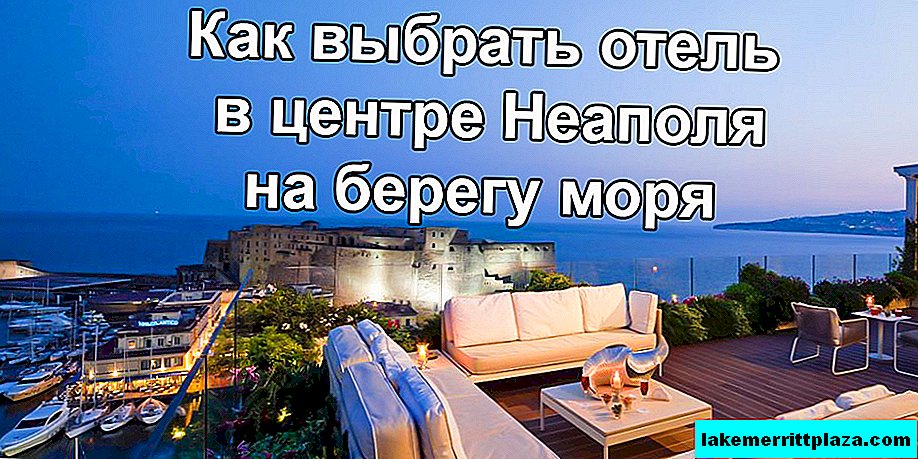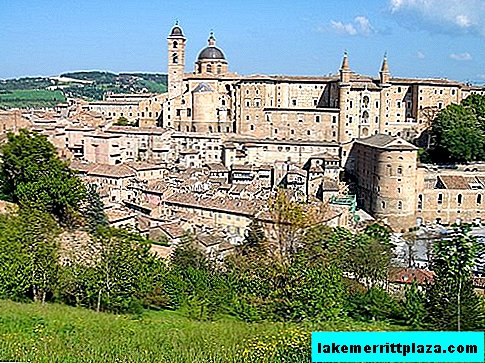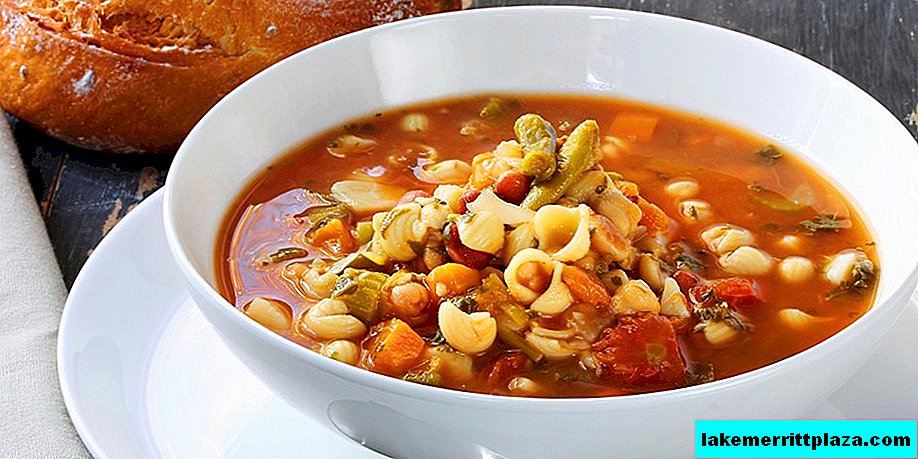Lucca is one of 4 Italian cities where the 16th century fortress wall has completely survived, and the only city where people adapted it for life, turning it into a park. Take a walk along the medieval streets of Lucca, climb the towers, sit in a cafe in the square, feel the ancient spirit of the city.

Lucca Photo by Leigh Trail
Lucca is a city of towers, magnificent palazzos and temples of the Trecento era, one of the most romantic corners of Tuscany. Beyond the stone walls of its old center, a leisurely patriarchal life flows.
5 things to do in Lucca
- To get acquainted with Lucca, walking along the ancient fortress walls surrounding the Old Town, which today turned into a park.
- Gain strength and patience to climb to the observation deck of the 44-meter tower of Guinigi. There, standing in the shadow of the “oak grove”, enjoy the panorama of the city.
- To honor the memory of the great composer Giacomo Puccini, a native of Lucca, standing near his monument. Go to the museum to see the scores, letters, personal items and the famous piano of the musician, behind whom Turandot was written.
- Drink coffee and stare at passers-by, sitting in a cozy cafe on the square, built on the site of an ancient Roman amphitheater.
- See if the San Michele in Foro church building is like a ship. Admire and appreciate the beauty and originality of openwork loggias.

On the streets of the city
When is the best time to go?
Lucca is located in the Tuscan Riviera, among the wooded hills at the foot of the Pisa mountains and the Apuan Alps. The city stands by the Serchio River, surrounded by a marshy wet valley. The climate in the winter is moderately warm and humid: it rains mainly in November. It is dry and hot in summer, with a minimum of rainfall in July. The average annual temperature is + 14.4 ° C; in July-August the heat reaches + 28-29 ° C, in January the thermometer drops to + 2 ° C.
Spring (April - May) is the best time to visit Lucca. The city is awakening, everything is blooming all around, the heat has not come yet, prices for hotels and services have not yet risen.
Sights
 Botanical Garden
Botanical Garden
 Fortress wall
Fortress wall
 St. Martin's Cathedral
St. Martin's Cathedral
 Church of St. John and the Reparata
Church of St. John and the Reparata
 Lily Theater
Lily Theater
 Church of St. Michael on the forum
Church of St. Michael on the forum
 Puccini House Museum
Puccini House Museum
 Palazzo Mansi Museum
Palazzo Mansi Museum
 Clock tower
Clock tower
 Guinigi Tower
Guinigi Tower
 Amphitheater Square
Amphitheater Square
 Basilica of St. Fridian
Basilica of St. Fridian
 National Museum of Villa Guinigi
National Museum of Villa Guinigi
Fortress wall

Fortress wall (Mura di Lucca)
The old center of Lucca is surrounded by a fortress wall (Mura di Lucca) about 4.5 km long with 11 bastions, 6 outer and 3 inner gates. They built it for defense against external enemies and protection from the waters of Serchio advancing on the city. In the XIX century, the wall was planted with plane trees. Today, when viewed from a height, it looks like a green velvet necklace encircling the city. This is the main park of the city with bike paths and walking alleys. Restaurants have been opened in the former bastions, and street cafes work upstairs. Mura di Lucca often serves as a backdrop for concerts and street performances.
Amphitheater Square

Piazza Anfiteatro (Piazza dell'Anfiteatro), photo r3dm @ r
The ensemble of the Amphitheater Square (Piazza dell'Anfiteatro) is built on the site of a Roman amphitheater of the II century. The oval space, which retained the shape of the ancient arena of gladiatorial battles, is surrounded by Renaissance buildings. There are 4 gates leading to the square.
Clock tower

Clock Tower (Torre delle ore), photo by Graham Tiller
The main sign of Lucca is the watchtowers and church campaigns: here and there they rise among the tiled roofs. In the XIV century there were 250 such structures, only 130 remained, many are equipped with viewing platforms.
The tallest is the 50-meter Clock Tower (Torre delle ore) (13th century) with a belfry and clock installed in 1754.
Guinigi Tower

Guinigi Tower (Torre Guinigi), photo by Joe Lewit
A unique structure is the Roman-Gothic tower of Guinigi (Torre Guinigi) (1384). On the top of this 44-meter-high building, stone oaks were planted in the 15th century. Trees are still growing.
St. Martin's Cathedral

Lucca Cathedral (Duomo di Lucca)
Cathedral of St. Martin (Cattedrale di San Martino) - a Gothic-style temple with a quadrangular bell tower, was founded in the VI century; acquired its present form in the XI century. Amazing columns are installed on its facade, renovated in the 13th century. Among them, there are no two identical: each is decorated with a unique carving, reliefs, inlays. Inside, paintings by Ghirlandaio and Tintoretto, Bartolomeo, Allori, sculptures by Giamboloni and Civitali, and the marble tomb by Jacopo Querci have been preserved.
Church of St. John and the Reparata

Church of Saints John and the Reparata (Chiesa dei Santi Giovanni e Reparata), photo emzepe
On the square of San Giovanni (Piazza San Giovanni) stands the Church of St. Reparata and nearby - the Baptistery of St. John. Temples were built at the end of the XII century. at the site of the sanctuary of the ancient era (V century). The complex of buildings of the Church of St. John and the Martyr Reparata (Chiesa dei Santi Giovanni e Reparata) combines the features of Romanesque, Gothic, Baroque architecture. Under it, archaeologists found the remains of ancient termas, an early Christian church and crypts from the time of the Lombards.
Church of St. Michael on the forum

Basilica of San Michele in Foro (Chiesa di San Michele in Foro), photo Gregory
Church of San Michele in Foro (Chiesa di San Michele in Foro) - a temple in the Roman Lombard style with 4 rows of openwork loggias. It was built in the XII century on the site of the ancient forum, where in the VIII century. there was an older church. The building resembles a huge ship, on the roster of which stands a 4-meter figure of the Archangel Michael framed by two angels.
Basilica of St. Fridian

Basilica of St. Fridian (Basilica di San Frediano), photo Richard Barrett-Small
The Basilica of San Frediano (Basilica di San Frediano) was founded in the VI century and rebuilt in the XII century in the Lombard style. A Byzantine mosaic is made above the portal. Inside is a Romanesque round marble font with elaborate bas-reliefs from the life of the prophet Moses. The relics of St. Zita rest in San Fridiano.
Villa Torrigiani

Villa Torrigiani, photo by Elena Battini
Villa Torrigiani is a prime example of secular baroque in Tuscany. Built in the 16th century for the Bonvizi family, reconstructed by order of the Marquis Nicolao Santini (Ambassador of the Republic of Lucca to the court of Louis XIV) on the model of Versailles palaces.
Lily Theater

Lily Theater (Teatro del Giglio)
The Lilia Theater (Teatro del Giglio), founded in 1672, survived several rebuilds. The ruler of Tuscany, Maria Louise Bourbon, named him after the flower of the emblem of the Bourbon dynasty. Today, the theater hosts concerts of symphonic music and dance programs; ballet, opera and drama performances.
National Museum of Villa Guinigi

National Museum of Villa Guinigi (Museo nazionale di Villa Guinigi)
The Museum of Guinigi Villa (Museo nazionale di Villa Guinigi) on Via della Quarquonia contains architectural and sculptural exhibits, fossil finds, and paintings from the 13th-18th centuries.
Museum at Mansi Palace

The Palazzo Mansi Museum (Museo di Palazzo Mansi), photo sailko
The Museo di Palazzo Mansi Museum is the National Museum and Pinacoteca. In the Renaissance palace of Mansi, the original atmosphere of the XVI-XVIII centuries was preserved. Ancient fabrics, tapestries, weaving devices are exhibited here; The National Pinacotheca was opened with a collection of paintings by Leopold II of the Duke of Tuscany. The collection presents the work of Tintoretto, Titian, Veronese.
Puccini House Museum

Monument to Giacomo Puccini near the house where the musician was born (Casa Natale di Giacomo Puccini), photo by vincenzo baldassarre
The house-museum of Giacomo Puccini (Puccini Museum) is located on Corte San Lorenzo 9. In it, the composer was born on December 22, 1858, spent his childhood and youth. In the museum you will see Puccini's personal belongings, the originals of his letters and scores, the piano, behind which the opera Turandot was written.
Botanical Garden

Botanical Garden (Orto botanico comunale di Lucca), photo fabcom
The Botanical Garden (Orto botanico comunale di Lucca) was founded by decree of Maria Louise of the Duchess of Lucca in 1820. About 200 species of plants are planted on 2 hectares, there is a pond on which the mystical shows "Murabilla" are held in autumn.
History paragraph

City view, photo by Marian Bulacu
The city was founded by the Etruscans in 218 BC. e. After 40 years, the Romans occupied the settlement, destroying it completely and rebuilding it. The empire fell under the onslaught of the Goths, then came the Lombards, Franks. After the fall of the Carolingian, Lucca became the capital of the Tuscan brand. From 1378 until the arrival of Napoleon, it was an independent republic. After the expulsion of the Bonapartes, Lucca belonged to the Tuscan Duchy, then the Kingdom of Sardin. Since 1861 it became part of a united Italy.
Holidays and festivals

At the festival of comics and games, photo Walter Pellegrini
July 11-12, the city celebrates the patron saint - St. Peacock. The festival of Palio di San Paolino opens with a solemn procession with banners. The most striking event is the crossbow tournament.
In July, Lucca hosts the Lucca Summer Festival. It takes place in the open air on Napoleon Square.
In August - the international festival Puccini (Festival Puccini).
September 13-14 - the main religious holiday - the Exaltation of the Holy Cross. Residents come to worship the relic - the Holy Face, the crucifix, which is stored in the Cathedral. In a procession with candles, believers from all city parishes participate.
Every year, at the turn of October - November, Lucca hosts the International Comic Festival (Lucca Comics and Games). Since 1993, he has covered the subject of computer games and simulations. Within 4 days, the festival brings together leading masters of the genre and many tourists.
Cuisine and restaurants

Lunch overlooking the Amphitheater Square
The local cuisine is simple and tasty. Among soups, Garmuch spring soup with peas, onions, asparagus, artichokes, green beans on beef broth with pieces of meat and brisket is popular. Try Matuffi - cornmeal porridge with mushrooms and parmesan or meat sauce. Traditional main dishes: Rovellina (rovellina) - beef, sliced in thin slices, fried and stewed in a sauce of tomatoes, capers and herbs; pork with chestnut polenta; rabbit in a sauce of tomatoes, red pepper, olives, onions and garlic, herbs; fried kid with artichokes; trout from the Serkio river on a spit; sun-dried cod (baccala) fried with chickpeas; vegetable casseroles using cauliflower, green beans, spinach, artichokes and beets.
Have a sweet tooth try the buccellato (buccellato) - a sweet cake with raisins and anise; nechi (necci) - chestnut flour pancakes stuffed with ricotta; castagnaccio (chestagnaccio) - a cake made of chestnut flour with pine nuts and raisins.
From wines, taste the white and red Montecarlo DOC and Colline Lucchesi DOC, as well as the herb-based Biadina liquor, which is produced only in Lucca.
Traditional Tuscan cuisine can be enjoyed at Trattoria da Leo (Via Tegrimi 1). For a bite to eat, check out Forno A Vapore Amedeo Giusti (Via Santa Lucia 18/20). Locanda Eremo del Gusto Restaurant (Via Gelli 35/37 - Petrognano - Capannori) is known for its magnificent views of the city. The Caffè di Simo (Via Fillungo, 58) serves the very best breakfast (cappuccino + cornetto for € 3-4) in an Art Nouveau interior. The Buca di Sant'Antonio (Via Cervia, 3) restaurant serves gourmet cuisine. For dinner, head to Vineria I Santi Restaurant on Piazza dell'Anfiteatro 17 or Vecchia Trattoria Buralli on Piazza Sant'Agostino 10.
Shopping

On Lucca's main shopping street, photo by mikewinburn
Every third weekend of the month in many squares of the city open antique markets, which are considered the best in Italy.
Via Fillungo is Lucca's main shopping street with boutiques Max Mara, Armani, Missoni, simple shops and souvenir shops.
Enoteca Vanni (Piazza del Salvatore 7) has a rich selection of Italian wines that you can taste before buying.
What's around

Chianti Valley
Not far from the city is the Migliarino Natural Park (Parco naturale di Migliarino, San Rossore, Massaciuccoli). On its territory there are various ecosystems - from wetlands to sand dunes. Its central part is occupied by a protected area of 5,000 hectares - San Rossore. There are rare birds, ungulates. The park complex includes the picturesque Lake Massachuccoli - an equipped recreation area where you can relax, ride a boat.
Travel to Pisa (18 km) to see Miracles Square, which is on the UNESCO list, and take a memorable standard photo on the background of the Leaning Tower.
Florence (Firenze, 75 km) is the capital of Tuscany, one of the most beautiful cities in the world, a museum city.
Impruneta (Impruneta, 83 km) - a city famous for terracotta products, ancient architecture and veneration of the Madonna del Impruneta.
The architectural highlight of San Gimignano (San Gimignano, 90 km) - 14 medieval towers of the 11th-13th centuries. In total, about 80 towers were built.
In Fiesole (Fiesole, 100 km), be sure to look at the Archaeological Zone with restored Etruscan and Roman ruins.
Bolgheri (Bolgheri, 100 km) is a picturesque village, a wine-growing region. Visit the vineyards, drop by the wine cellar to enjoy super Tuscan wines.
Residents of Siena (Siena, 152 km) carefully preserve the Gothic look of the city, created in the XII-XV centuries.
The Chianti Valley is located between Florence and Siena. She is primarily known for her red wines.
How to get to Lucca?
Build a route by public transport from any city:
How do I save on hotels?
Everything is very simple - look not only at the booking. I prefer the search engine RoomGuru. He is looking for discounts at the same time on Booking and on 70 other booking sites.





